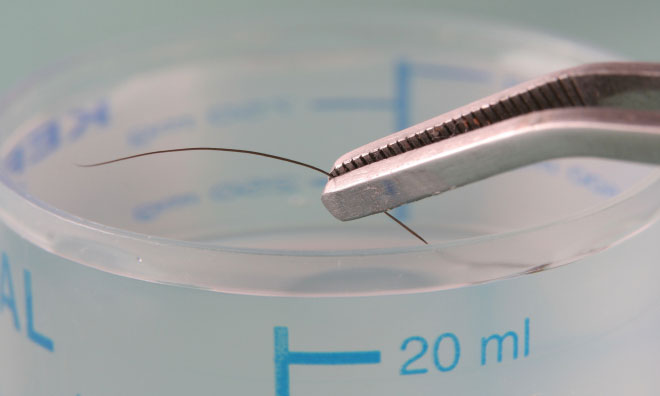
Defense Lawyers Group Leads Call for Change After Scathing FBI Report
A review of transcripts from criminal cases dating back more than 20 years found that 95 percent included flawed testimony by FBI forensic experts. The leader of the legal association at the center of the review said it will advocate for reforms to better protect the wrongly accused.
Change is coming to the FBI Laboratory, and the National Association of Criminal Defense Lawyers plans to help shape it.
A scathing report released jointly this week by NACDL, the Innocence Project, the U.S. Department of Justice (DOJ), and the FBI itself found that a majority of the agency’s examiners from its microscopic hair comparison unit gave flawed testimony in almost every trial in which they offered evidence against criminal defendants—many of which resulted in convictions. Hair-match analysis was a common method of linking suspects to crimes before DNA testing became widely available 15 years ago.
This is really the quintessential example of how a professional association can contribute to the welfare of society.
“The main thing now is to promote systemic reform so that we can try to prevent this from happening again,” NACDL Executive Director Norman Reimer said in an interview with Associations Now. “The flaw in this [hair match] evidence has been known for many, many years, and that’s part of the reason why it’s such a big story—it went on for so long without being remedied.”
After the introduction of mitochondrial DNA testing in 2000—a more effective type of forensic analysis that led to multiple exonerations in cases where evidence from hair matching had been used—NACDL and the Innocence Project urged the FBI to review past cases.
“What we were finding was that the examiners … wouldn’t just simply say that there was a microscopic similarity [between the two hairs], but they would go beyond that and say it was an 100 percent match, essentially misleading the jury into concluding that the evidence had a certain value that it didn’t actually have,” Reimer said.
The FBI and DOJ agreed to review the cases in 2012 and created the Microscopic Hair Analysis Review project.
The project was a massive undertaking for NACDL and the other organizations involved. More than 2,500 cases over a two-decade period were found to have included flawed testimony from a majority of FBI examiners. Of the 268 trials reviewed so far, examiners overstated the forensic evidence in 259. From those trials, 32 defendants were sentenced to death; 14 have been executed or died in prison.
The project has required the full attention of at least two NACDL staff members and has been supported by donations and time volunteered by members, Reimer said.
“This is really the quintessential example of how a professional association can contribute to the welfare of society,” he said. “We all have an interest in wanting to see people have a fair trial and get a just result. And we also have an interest in making sure where there are problems in our system that they get exposed and corrected. I feel like this is one of the most significant contributions that we could have made to the welfare of society and in our case, because we’re a legal organization, to the cause of justice.”
Throughout the process, NACDL members have provided pro bono legal assistance to every person whose case is under review, Reimer said. The association has also conducted training programs for members on hair microscopy evidence and how to look for the problems uncovered in the review.
“The next step for us,” Reimer said, “is we’ll be going to our members and state affiliates and urging them to take a very close look at what went on in their states—because these same FBI examiners have trained countless state-level examiners over the years—and perhaps launch similar programs on a statewide basis.”
(iStock/Thinkstock)






Comments